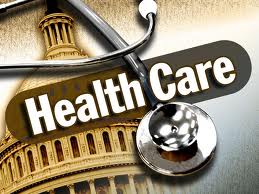The HIPAA omnibus regulation is finally out as a final reg. The HIPAA Privacy, Security, Enforcement, and Breach Notification Rules were released late yesterday, and are expected to be published in the Federal Register on January 25 here: HIPAA Final Regulation. (See the end of this post for info about an upcoming online event.)
The HIPAA omnibus regulation is finally out as a final reg. The HIPAA Privacy, Security, Enforcement, and Breach Notification Rules were released late yesterday, and are expected to be published in the Federal Register on January 25 here: HIPAA Final Regulation. (See the end of this post for info about an upcoming online event.)
UPDATE 1/21/2013: Join Brian Ahier, Deven McGraw and me, David Harlow, for a Google+ Hangout on Air Wednesday, January 23, 2013, at 11 AM PT, 2 PM ET, where we will discuss the HIPAA Final Rule. Leave us your questions as comments to this post.
Here’s the whole 563 pages:
HIPAA Privacy, Security, Enforcement, and Breach Notification Rules
The accompanying presser details a few of the highlights:
The final omnibus rule greatly enhances a patient’s privacy protections, provides individuals new rights to their health information, and strengthens the government’s ability to enforce the law.
“Much has changed in health care since HIPAA was enacted over fifteen years ago,” said HHS Secretary Kathleen Sebelius. “The new rule will help protect patient privacy and safeguard patients’ health information in an ever expanding digital age.”
The changes in the final rulemaking provide the public with increased protection and control of personal health information. The HIPAA Privacy and Security Rules have focused on health care providers, health plans and other entities that process health insurance claims. The changes announced today expand many of the requirements to business associates of these entities that receive protected health information, such as contractors and subcontractors. Some of the largest breaches reported to HHS have involved business associates. Penalties are increased for noncompliance based on the level of negligence with a maximum penalty of $1.5 million per violation. The changes also strengthen the Health Information Technology for Economic and Clinical Health (HITECH) Breach Notification requirements by clarifying when breaches of unsecured health information must be reported to HHS.
Individual rights are expanded in important ways. Patients can ask for a copy of their electronic medical record in an electronic form. When individuals pay by cash they can instruct their provider not to share information about their treatment with their health plan. The final omnibus rule sets new limits on how information is used and disclosed for marketing and fundraising purposes and prohibits the sale of an individuals’ health information without their permission.
“This final omnibus rule marks the most sweeping changes to the HIPAA Privacy and Security Rules since they were first implemented,” said HHS Office for Civil Rights Director Leon Rodriguez. “These changes not only greatly enhance a patient’s privacy rights and protections, but also strengthen the ability of my office to vigorously enforce the HIPAA privacy and security protections, regardless of whether the information is being held by a health plan, a health care provider, or one of their business associates.”
The final rule also reduces burden by streamlining individuals’ ability to authorize the use of their health information for research purposes. The rule makes it easier for parents and others to give permission to share proof of a child’s immunization with a school and gives covered entities and business associates up to one year after the 180-day compliance date to modify contracts to comply with the rule.
The final omnibus rule is based on statutory changes under the HITECH Act, enacted as part of the American Recovery and Reinvestment Act of 2009, and the Genetic Information Nondiscrimination Act of 2008 (GINA) which clarifies that genetic information is protected under the HIPAA Privacy Rule and prohibits most health plans from using or disclosing genetic information for underwriting purposes.
Most of the revisions are familiar to those of us who have tracked the proposed rules and interim final rules issued over the past several years, though there are some new ideas here, too, the result of plenty of percolating, as well as review of some of the comments filed. The effects are wide ranging, touching everything from marketing to big data to app development and beyond.
The compliance date for the new rules will be September 23, 2013. (The rules are effective 60 days after publication, and the compliance date is 180 days after that.) So there will be plenty of time for OCR to issue some guidance documents as promised in the rule and for Covered Entities to get their acts together and pull together revised Notices of Privacy Practices and Business Associate Agreements, among other things. Business Associates and their subcontractors will have their share of work to do as well, now that they are within the ambit of the rule.
I am planning to present a discussion of the final rule live, on line, in the next week, together with other experts. Watch this space for details. If you have any questions you would like us to address, please post them as comments.






